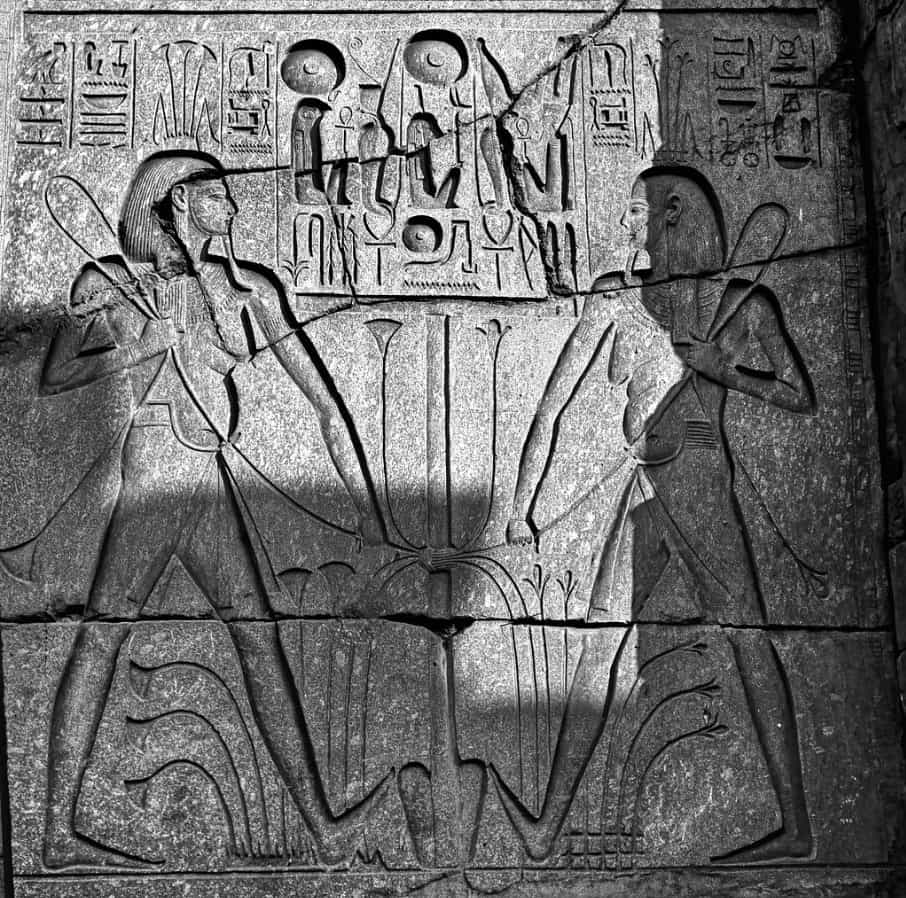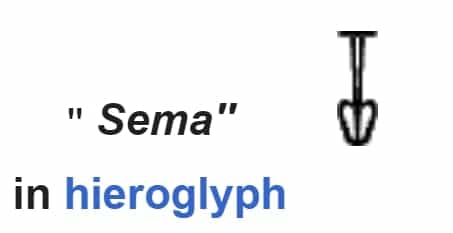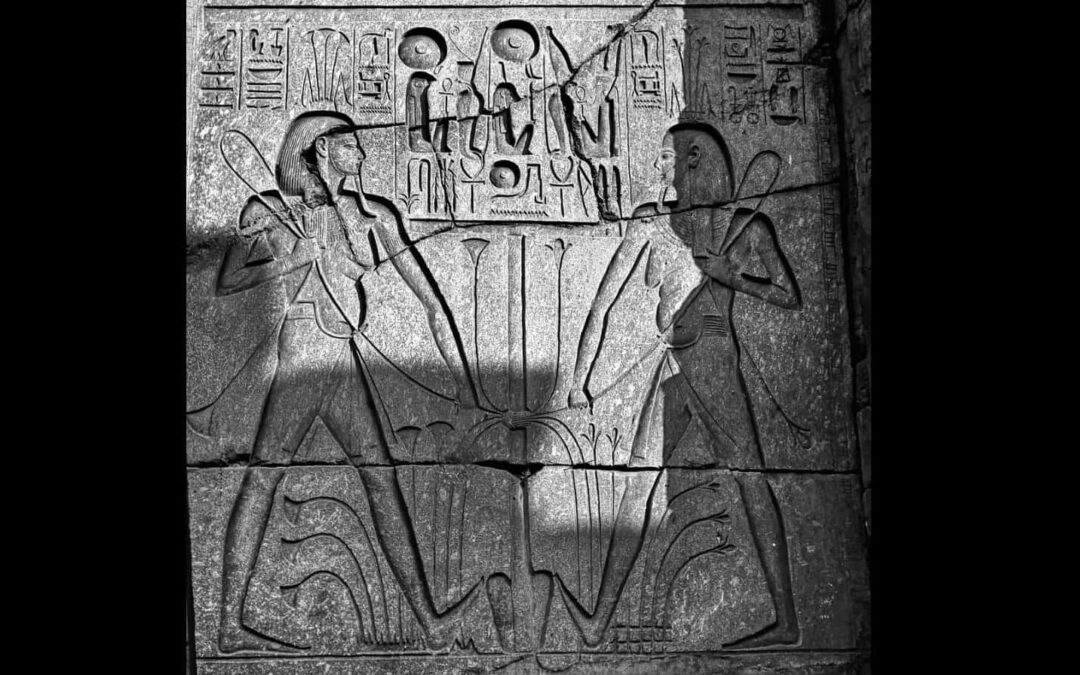The Sema-Tawy symbolized the unity between Upper and Lower Egypt.
It consists of the two emblematic plants from these regions: the lotus flower (representing Upper Egypt) and the papyrus (representing Lower Egypt), bound together with the hieroglyph “sema,” signifying “union,” and depicting the trachea and lungs. The earliest known depiction dates back to the era of Pharaoh Den from the First Dynasty.
The act of binding the two plants was often illustrated as being carried out by two ancient Egyptian gods. Frequently, the deity depicted was Hapi, the god of the Nile, depicted in a double form, although Thoth, Horus, or the duality of opposing gods Horus and Seth could also be represented.
The Sema-Tawy was portrayed on various objects, including the sides of thrones in seated statues of pharaohs like Khafre or Menkaure, as well as in the bas-reliefs of temples.
When used as an amulet placed upon the deceased, it signified the perpetuity of their body’s unity, ensuring their enjoyment of eternal life.
Moreover, it constituted the second of three ceremonies during the enthronement of a pharaoh. After the proclamation of his title and the completion of a series of purifications, the intertwining of papyrus and lotuses within a wooden “sema” represented the unity of the two lands. This ritual placed the pharaoh under the protection of the two emblematic plants.









